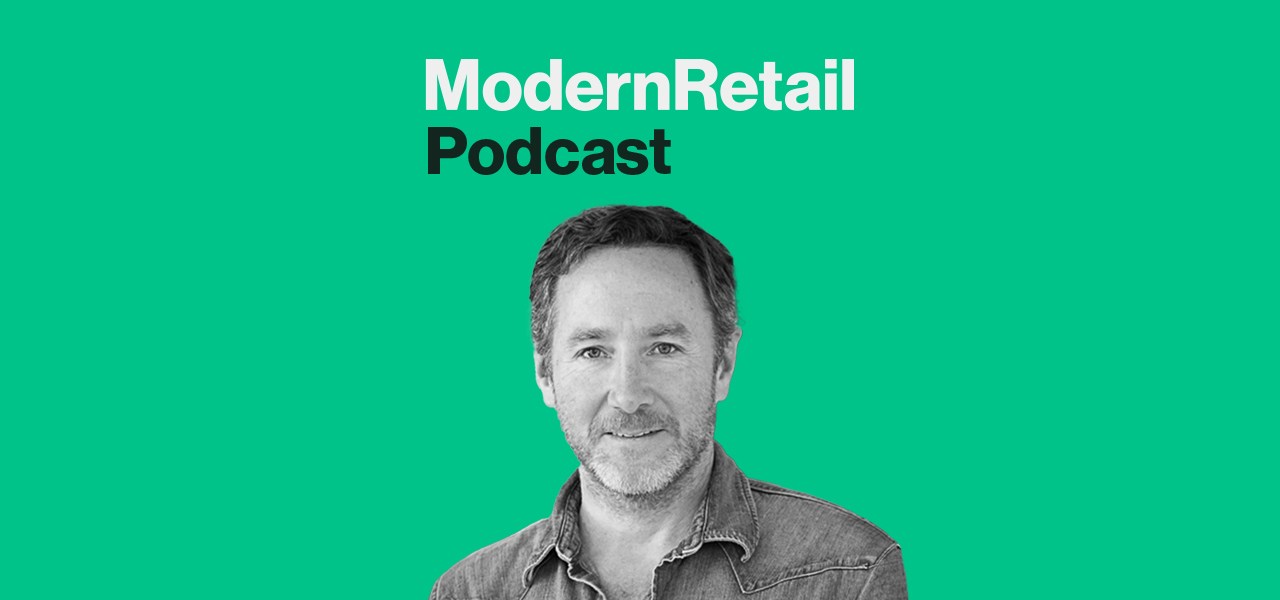Former Peloton CEO John Foley on why he launched his rug startup Ernesta

Subscribe: Apple Podcasts • Spotify
John Foley may be best known as the founder and former CEO of Peloton, but it turns out interior design is his real passion.
“I’ve been passionate about rugs for decades,” he said on the Modern Retail Podcast. “I love design, I love spaces.”
This was all said to explain why he launched a rug company. Ernesta is a direct-to-consumer brand selling higher-end rugs. It launched in September of last year and just opened its first showroom in Manhattan last month.
“Now I’m addicted to you know those super high-end custom rugs,” he said. “And we’re trying to bring them now to both interior designers and to consumers at a price point that most people can afford.”
Ernesta is still in its early days, but Foley said the business is growing and gaining a name for itself. As he described it, the hope is for Ernesta to do for rugs what The Shade Store did for curtains. He even sees Ernesta’s business model looking similar to it. “[The Shade store is] right around 50/50, selling to consumers and selling to trade. So we believe we’re going to be right in that zone,” he said.
Still, the company is very young and still has a lot of learning to do. The biggest lesson thus far is figuring out how best to tap the vast and opaque world of interior design. While customers can buy their rugs directly from its site or store, Foley is also hoping to becoming a trusted partner to designers and firms.
“My team and I come from the consumer world, and so we understand consumers a lot more than we understand interior designers and the trade,” he said. “So we’re learning our way into it.”
Now, with the first store open, Ernesta is hoping to see how well it helps grow sales — and eventually continue building the business from there. The company is also planning on launching an online platform for customers to share their own designs and interior layouts in the hopes of inspiring others.
“We’re building this scaffolding — this product experience community — onto Ernesta,” he said. “And I think in the next six to 12 months, that’s going to come to life and be a really special part of the shopping experience.”
Here are a few highlights from the conversation, which have been lightly edited for clarity.
Modeling after The Shade Store
“The best metaphor we’ve found for the business that we’re trying to build is The Shade Store. They do a fantastic job sizing and fitting custom shades and drapes to your home. And interestingly they are right around 50/50, selling to consumers and selling to trade. So we believe we’re going to be right in that zone.”
Figuring out the interior design world
“My team and I come from the consumer world, and so we understand consumers a lot more than we understand interior designers and the trade. So we’re learning our way into it. A lot of it is happening organically. Designers care about custom. They love our offering, they’re hearing about us, they’re experiencing us and they’re coming back and working us into [their businesses as] one of their go-to sources for rugs. It’s just happening by virtue of us creating a great experience with great rugs at a great price and a great turnaround time. I think 25% of our of our sales right now are through interior designers, and it’s growing pretty significantly.”
Why Ernesta is investing in TV advertising
“We’ve been testing TV. And as we grow — and as our awareness increases– the efficiency of TV has been increasing. We launched eight months ago and we tried TV right away, and it was a relatively inefficient customer acquisition cost. We’re testing it now again, and I think it’s three times more efficient than it was eight months ago. And a lot of that is through just general aided brand awareness. When we launched, it was zero and it’s ticking up into the single mid digits. But at Peloton when we got up to 20% aided brand awareness, we saw an inflection point of the efficiency of some of our other marketing channels because people had heard about us and they no longer needed to be educated. Now they were thinking about, ‘OK, I’m kind of interested in this, now I need an offer.’ So throughout the brand evolution, there are different things that work and we believe TV will work soon.”
